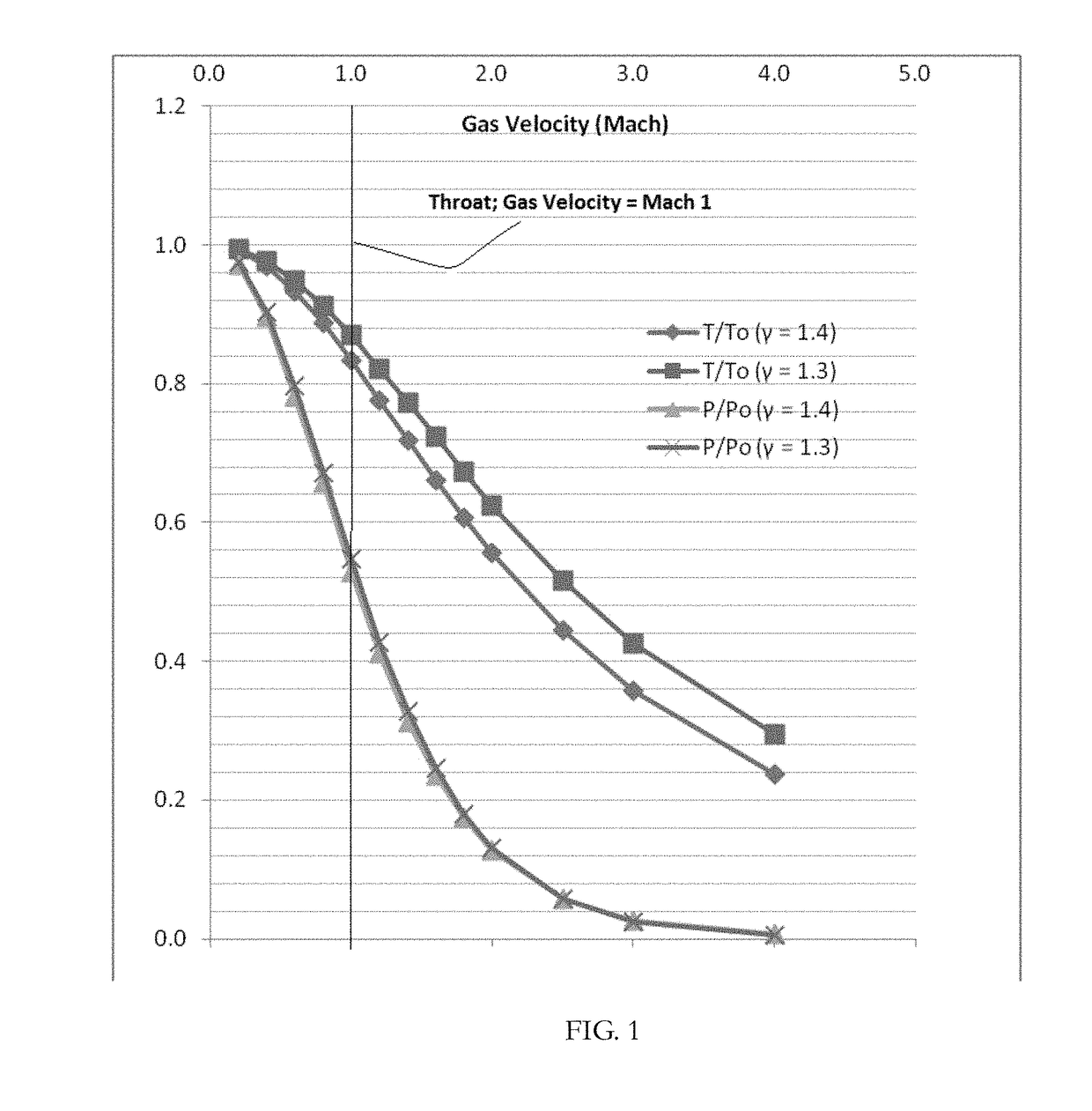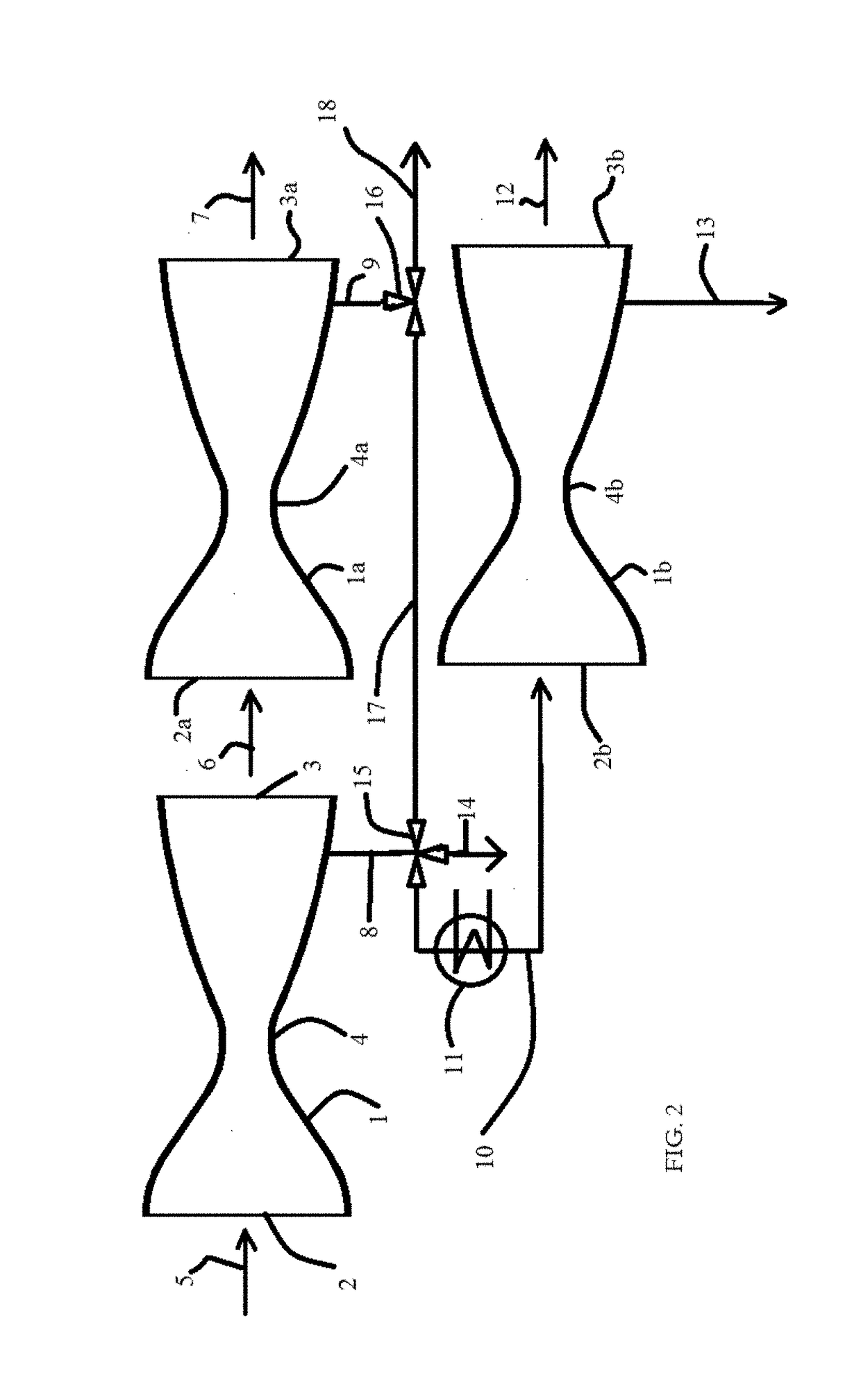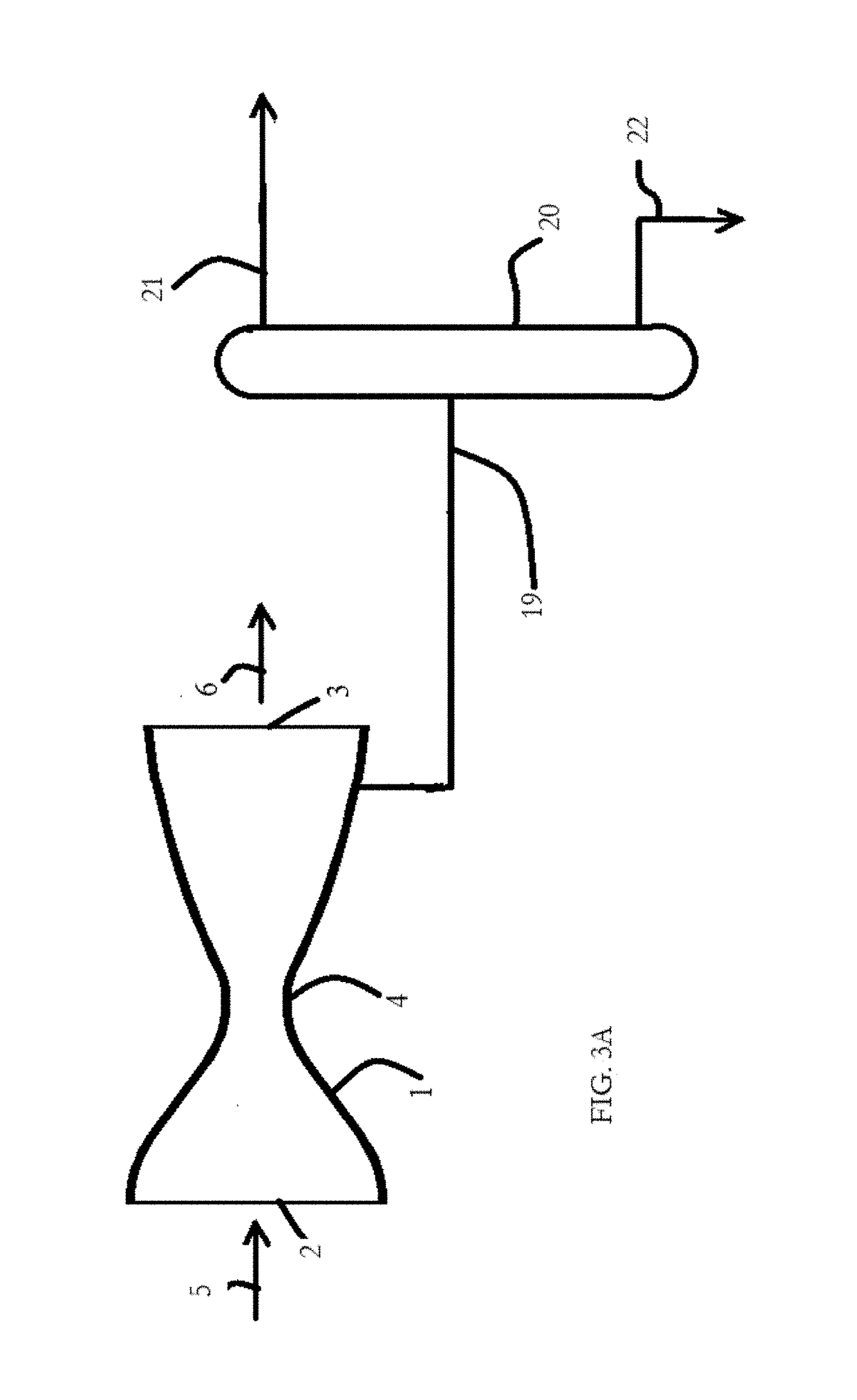Supersonic separation of hydrocarbons
- Summary
- Abstract
- Description
- Claims
- Application Information
AI Technical Summary
Benefits of technology
Problems solved by technology
Method used
Image
Examples
example 1
n of Propane from a Propane / Air Mixture
[0111]Separation of propane from a gas stream of mixture of air and propane gas may be accomplished using a de Laval nozzle, where the gas-stream is at an initial pressure of 21 bar, and an initial temperature of 313° K. The gas mixture contains 20 mol % propane at partial pressure P1 and 80 mol % air at partial pressure P2; by the relationship P=P1+P2, the mixture under these initial conditions contains air at a partial pressure of 16.8 bar and propane at a partial pressure of 4.2 bar. Since the mixture is predominantly air, γ is assumed to be ˜4.4.
[0112]FIG. 5A shows the equilibrium vapor pressure of propane (bar) as a function of temperature (degrees K). Table 2 shows the change in temperature and propane partial pressure as the gas accelerates from Mach 1, at the nozzle throat, to Mach 2.
TABLE 2Propane Partial Pressure (Bar) in a de Laval Nozzle.PropanePropaneVelocityT (Air,P / PoPartialEquilibrium(Mach)degrees K)(γ = 1.4)PressureVapor Pressu...
example 2
n of Propane from a Propane / Ethane Mixture
[0116]Use of a de Laval nozzle also allows separation of propane from a mixture of ethane gas and propane gas at an initial pressure of 21 bar, and an initial temperature of 313° K. The gas mixture contains 20 mol % propane at partial pressure P1 and 80 mol % propane at partial pressure P2; by the relationship P=P1+P2, the mixture under these initial conditions contains ethane at a partial pressure of 16.8 bar and propane at a partial pressure of 4.2 bar. The term γ is assumed to be substantially constant at ˜1.3, as the mixture is a mixture of hydrocarbon gases.
[0117]FIG. 5A and FIG. 5B show the equilibrium vapor pressures of propane and ethane (bar), respectively, as a function of temperature (degrees K). Table 3 presents the change in temperature and partial pressures as the gas accelerates from Mach 1, at the nozzle throat, to Mach 3. At the nozzle throat (Gas velocity c=Mach 1), the partial pressures of ethane and propane in the vapor s...
example 3
n of C3 Hydrocarbons from a Hydroformylation Waste Gas Stream
[0118]A simulated process purge stream was examined in the supersonic separator model, where the stream contains the following gases, expressed in terms of mol % of the total: Hydrogen 43%, nitrogen 14%, carbon monoxide 13%, carbon dioxide 3%, methane 3%, ethane 0.5%, propane 21%, and propene 1.5%. Thus, about 86% of the hydrocarbon gases were C3 hydrocarbons (propane and propene). The process stream was simulated at 305 psig [21.03 bar (g)] and a flow rate of 40 thousand standard cubic feet per minute. Table 4 shows the C3 fraction recovery as a function of feed temperature. The C3 recovery is defined as mass fraction of C3s in liquid relative to the total C3s in feed. Each stage of C3 hydrocarbon separation from a supersonic gas stream was modeled in a bench-scale de Laval nozzle capable of a Mach 2 expansion.
TABLE 4C3 Recovery from a Hydroformylation Waste StreamFeed TemperatureC3 Recovery(C.)(%)40172028039
[0119]Table 4...
PUM
| Property | Measurement | Unit |
|---|---|---|
| Temperature | aaaaa | aaaaa |
| Temperature | aaaaa | aaaaa |
| Pressure | aaaaa | aaaaa |
Abstract
Description
Claims
Application Information
 Login to View More
Login to View More - R&D
- Intellectual Property
- Life Sciences
- Materials
- Tech Scout
- Unparalleled Data Quality
- Higher Quality Content
- 60% Fewer Hallucinations
Browse by: Latest US Patents, China's latest patents, Technical Efficacy Thesaurus, Application Domain, Technology Topic, Popular Technical Reports.
© 2025 PatSnap. All rights reserved.Legal|Privacy policy|Modern Slavery Act Transparency Statement|Sitemap|About US| Contact US: help@patsnap.com



